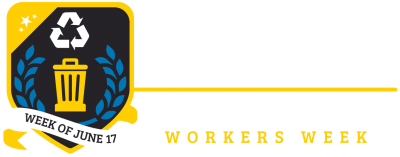
Dumpster and Trash Fires
It has been said that as firefighters, we “risk a lot to save a life, risk a little to save little, and risk nothing to save nothing.” Your first thought at a dumpster or trash fire should be that this is garbage. There is no value to discarded items and no need to risk your life trying to save them. On December 29, 2009, several Wisconsin firefighters were injured, and one died from injuries sustained, when a large explosion occurred while operating at a dumpster fire in the parking lot of a manufacturing plant. This could have happened anywhere in America. When it comes to dumpster and trash fires, there is typically no civilian life hazard; you (and your fellow firefighters) are the life hazard. Because of this, the primary concern of an incident commander (IC) and all who are working on the scene should be to take appropriate precautions to protect fellow firefighters and prevent injury.
At a warehouse fire, you can always obtain material data safety sheets to determine what hazardous materials are present. With dumpster and garbage fires, this is not always possible. Regardless of any container markings, the contents inside dumpsters are the ultimate unknown. Even if the dumpster is in front of a construction site, you cannot assume it is full of scrap wood and packaging materials. There is always the possibility of illegal dumping of a variety of hazardous materials that can include chemicals, biological waste, explosives, PCBs, asbestos, plastics, and sharp items that can penetrate through fire boots and personal protective equipment (PPE) such as glass and nails ( photo 1). It is essential for firefighters to understand that other than for a suspected or confirmed life hazard (such as vagrants living in the area or kids playing), there is no reason to enter a dumpster. Furthermore, by using the reach and penetration of the fire stream and by remaining upwind and using tools such as pike poles, firefighters should remain at a safe distance to avoid injury and the threat of contaminated gear.
(1) The possibility of the illegal dumping of hazardous materials should be considered at all dumpster fires. (Photo by Anthony DeLucia.)
The type and construction of dumpsters add to the hazards of dumpster fires. The three most common types are open-top, roll off (generally found at construction sites); compactor/closer, roll off (typically found at commercial sites); and flip top (usually found at small businesses or multifamily occupancies). All may have unknown contents that could result in unpredictable fire behavior and reaction. Closed containers will smolder and pose a threat of backdraft; large, open-top containers will radiate heat; and plastic lids on flip-top containers will melt from fire exposure.
Routinely speaking, a single engine should provide enough personnel and water to effectively extinguish a typical dumpster fire, but firefighters should avoid becoming complacent and should be prepared for the worst-case scenario. Besides the content factor and firefighter safety, the IC should be looking to secure the scene and monitor exposures. Dumpsters are usually positioned near exposures, and these fires typically produce a heavy volume of fire and extremely high heat. When the exterior of an exposure is threatened, additional lines and staffing will be required. Furthermore, you will also need to call for enough staffing to allow you to effectively search the interior of the structures. If the fire extends into a nearby exposure, this incident becomes a working structure fire, and a minimum of a full alarm assignment will be required.
Operational guide for dumpster and trash fires
The following steps should be followed when confronted with a dumpster or trash fire.
1. Wear full personal PPE, and use a self-contained breathing apparatus (SCBA).
You cannot predict what is in a dumpster, including the possibility of hazardous materials and containers that pose explosive threats.
Stay out of the smoke, work with the wind at your back, and use the reach of your stream for protection.
Firefighters must remain on air. Always consider the possibility of a change in wind speed and direction.
2. Establish a safety zone to protect firefighters.
Consistently monitor firefighters, and evaluate their condition.
Position fire apparatus to shield firefighters from approaching vehicles.
Use cones, flares, and/or caution tape to keep vehicles and onlookers at a safe distance.
Have law enforcement respond to assist in pedestrian and traffic control.
Consider topography, runoff, wind direction, weather conditions, and other hazards such as overhead wires when you position firefighters.
If you suspect the presence of hazardous materials, call for the response of a hazmat team or environmental specialists.
3. Establish an adequate water supply.
There should be a continuous water supply.
Prepare for a stubborn fire and for possible extension to exposure(s).
